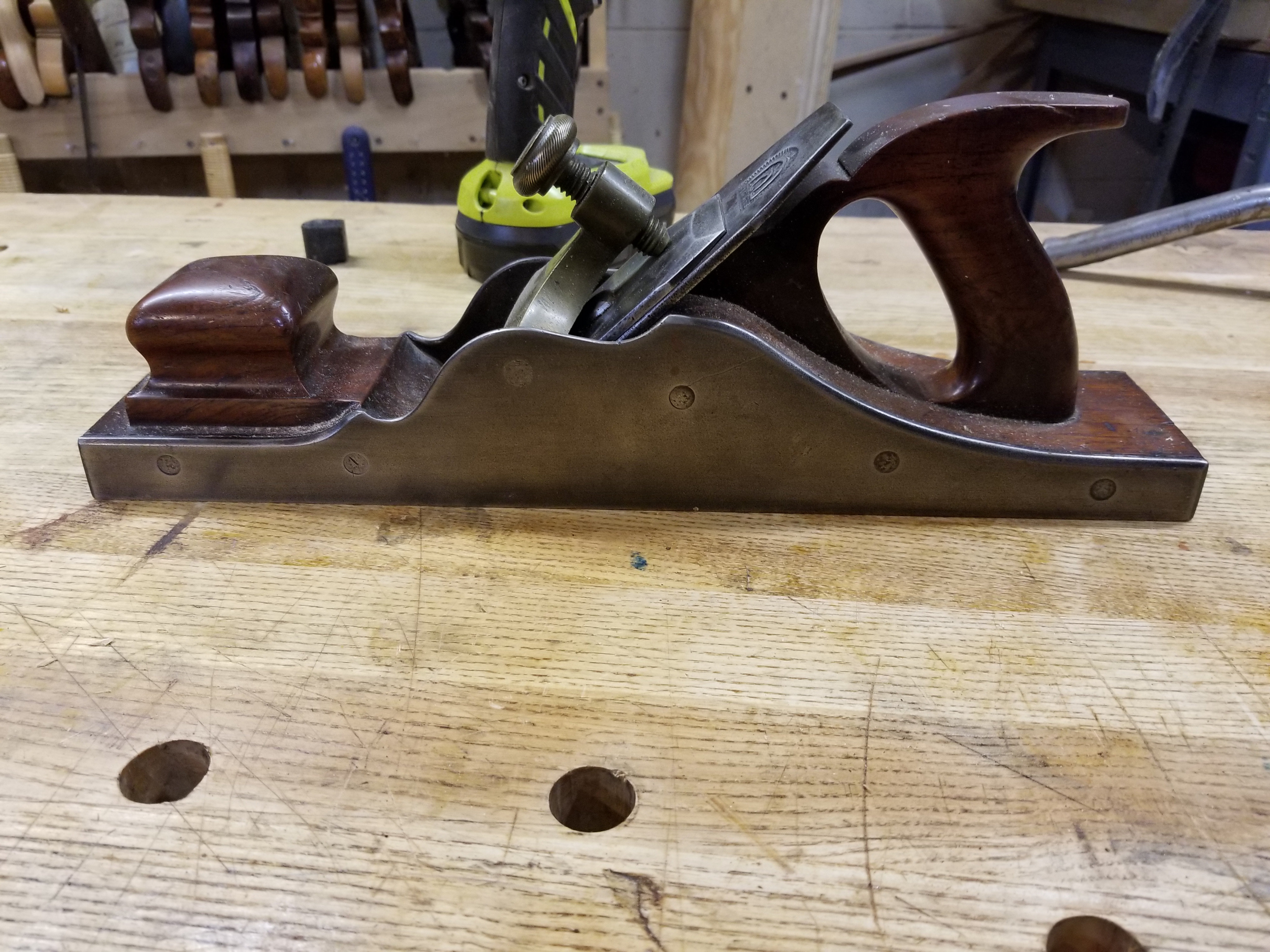It was mentioned in another thread that infills often don't make very good tools for rough work. That can be true - I think they probably excelled not in a world of rosewood and ebony, but one of mahogany or other woods that allowed a fairly hefty cut with a wide blade (whereas you literally wouldn't be able to push a plane if the wood was something like purpleheart, rosewood, ebony, etc).
I fished this plane out of your pond over there in the UK. It is wonderfully made, and though I've had a lot of infills, it's my favorite. It was owned by a luthier over there, and very obviously still in current use - the dealer didn't tell me whether retirement or death or whatever caused it to be let go.

As it's not a "brand name" plane, it was spectacularly inexpensive. 165 pounds. Shipped to the US. Since it was in current use, it took very little to make it right. This isn't mahogany, but it's limba, and works much the same. You can work it quickly if you're willing to use a cap iron, and take heavy shavings. If you refuse to use the cap iron, it will punish you.

If you couple the cap iron use and the softness of the wood with a plane like this, the weight isn't as punishing. To surface both sides of this joined blank (we join rough wood first and then flatten it) and then even it out for thickness is about a 15 minute task.
The shavings are bright and have nice chatoyance (something I couldn't capture), but the wood itself contains a lot of silica. The oft-pushed policy of sharpen often and take a thin shaving wouldn't work well. A click through of the following link (look at the darker spots of the wood to see the silica bits in the pores) to larger size will show you why - you would have serious dullness very quickly. In order to cope with the dulling iron, you have to try to get under as much of this as possible rather than trying to cut through it.
https://i.imgur.com/SSoXNqi.jpg
jack plane through this without taking much off is also out of the question due to tearout. It may be the case that this is actually an ideal plane (a wood try plane being another good option, but this infill can do both thicknessing and smoothing) for this type of work, as well as for other well sawn mahogany - the key being that these woods are stable and they don't have big undulations from movement that need to be lopped off by a jack plane.
For anyone who manages to run across a decent infill panel plane, don't be afraid to let it take a big bite of pleasant wood - that's where they really shine.
I fished this plane out of your pond over there in the UK. It is wonderfully made, and though I've had a lot of infills, it's my favorite. It was owned by a luthier over there, and very obviously still in current use - the dealer didn't tell me whether retirement or death or whatever caused it to be let go.

As it's not a "brand name" plane, it was spectacularly inexpensive. 165 pounds. Shipped to the US. Since it was in current use, it took very little to make it right. This isn't mahogany, but it's limba, and works much the same. You can work it quickly if you're willing to use a cap iron, and take heavy shavings. If you refuse to use the cap iron, it will punish you.

If you couple the cap iron use and the softness of the wood with a plane like this, the weight isn't as punishing. To surface both sides of this joined blank (we join rough wood first and then flatten it) and then even it out for thickness is about a 15 minute task.
The shavings are bright and have nice chatoyance (something I couldn't capture), but the wood itself contains a lot of silica. The oft-pushed policy of sharpen often and take a thin shaving wouldn't work well. A click through of the following link (look at the darker spots of the wood to see the silica bits in the pores) to larger size will show you why - you would have serious dullness very quickly. In order to cope with the dulling iron, you have to try to get under as much of this as possible rather than trying to cut through it.
https://i.imgur.com/SSoXNqi.jpg
jack plane through this without taking much off is also out of the question due to tearout. It may be the case that this is actually an ideal plane (a wood try plane being another good option, but this infill can do both thicknessing and smoothing) for this type of work, as well as for other well sawn mahogany - the key being that these woods are stable and they don't have big undulations from movement that need to be lopped off by a jack plane.
For anyone who manages to run across a decent infill panel plane, don't be afraid to let it take a big bite of pleasant wood - that's where they really shine.
































